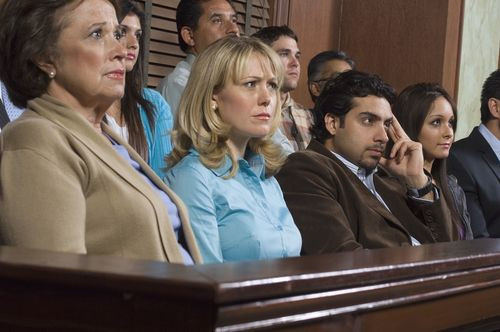Video Evidence May Increase Our Biases, Especially When We Look Too Closely

You’ve grown up on a steady diet of TV and movies. Whether you’ve watched very little or excessively, you were born in a media saavy era so most likely you are wise in the ways that a videotape can be manipulated, and probably, too, you have some understanding of how any recorded scene affects you. Now, a new study points to possible gaps in our knowledge about how we watch videotape and how the attention we pay to it influences our decisions. When watching recorded evidence from a court case, a new study finds, people focus on the defendant for different amounts of time, and this influences them — increasing their biases — when it comes time to deciding on punishment. Even when we see evidence "with our own eyes," then, we may not be able to be objective.
How We Observe Makes A Difference
Are you aware of how much you focus on some details and not others while watching a movie or TV? The following series of experiments conducted by a team of researchers from New York University and Yale University suggest there may be wide differences in how we watch media. To understand the impact of videotaped evidence, the team began by gauging how much 152 participants identified with police officers by presenting a series of statements (e.g., “Your background is similar to that of most police officers”), which the participants then rated on a seven-point scale of agreement/disagreement.
Next, participants watched a 45-second video clip, minus the sound, depicting an actual though amibiguous altercation between a police officer and a civilian. On the tape, the officer attempts to handcuff a resisting civilian; after struggling, the officer pushes the civilian against his cruiser; the civilian bites the officer’s arm; then, the officer hits the back of the civilian’s head. Meanwhile, as participants watched the video, the researchers used eye-tracking technology to gauge how much of the time participants' gaze fixated on the officer. Afterward, participants learned facts that incriminated the police officer, and then they imagined themselves as jurors and answered how likely they would be to punish and fine him.
What did the researchers discover? How much each participant identified with police in general influenced how little or much they punished the particular officer only if they had focused their attention on him while watching the videotape. For instance, participants who looked frequently at the police officer punished him far more severely if they did not identify with him. By contrast, those participants who did not identify with him yet looked at him less often while watching the tape were less severe when punishing him.
In a second experiment, the same participants viewed another video depicting a different "ambiguous" altercation. Here, though, the researchers instructed some participants to focus on the police officer while instructing others to focus on the civilian. By tracking their eye movements, the researchers affirmed the participants had complied. The results? Those who paid closer attention to the police officer saw his actions as more incriminating and sought to punish him more severely if they felt little social connection to him.
“One might think that the more closely you look at videotape, the more likely you are to view its contents objectively,” said Dr. Emily Balcetis, an assistant professor in NYU’s Department of Psychology. However, she explained, the experiments show this is not the case, revealing instead the more closely you look, the more the evidence seems to confirm your pre-existing prejudices.
In a final experiment meant to explore this hypothesis outside of police, the researchers enlisted the help of a new set of participants who watched a videotape of an orchestrated fight between two college-aged white men: one wearing a blue shirt, the other wearing green. Prior to seeing the tape, participants answered personality questions and the researchers told them, falsely, their answers were more similar to either the blue group or the green group. This identification through color, then, encouraged participants to see one man as part of their "ingroup,” while the other man represented the “outgroup.”
What did the researchers discover? Similar to the previous experiments, participants who watched the outgroup man more closely were more likely to recommend stiffer punishment. Once again, close attention paid to some details while watching a videotape increases bias and influences decisions. "Our findings show that video evidence isn't evaluated objectively — in fact, it may even spur our existing biases," Balcetis said.
Source: Balcetis E, Schneider K, Tyler T, Granot Yael. Justice Is Not Blind: Visual Attention Exaggerates Effects of Group Identification on Legal Punishment. Journal of Experimental Psychology: General. 2014.



























